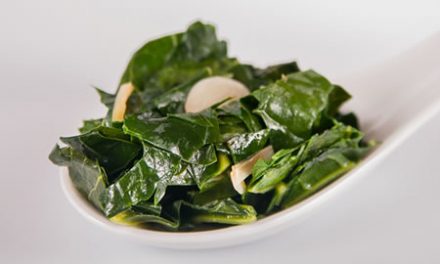Southeast Asian cooking offers food with deep, rich flavor, but without a lot of fat and sweeteners.
May is Asian Pacific American Heritage Month, a celebration of Asian and Pacific Islanders in the United States. It's a good opportunity to take a look at this healthful, flavorful cuisine.
Southeast Asian cooks use a variety of herbs and other ingredients to maximize the flavor of a dish, instead of relying on salt, sugar and fat as so much Western cooking does.
Southeast Asian cooks aim for a balance among the five basic tastes: sour, bitter, sweet, salty and hot. Outside the West, a sixth taste element has been recognized for thousands of years. Called by its Japanese name, umami, this component adds mouth feel and depth of flavor to a dish, especially soups and sauces.
Instead of relying simply on salt for saltiness, many Asian cooks use a sauce made of fermented fish, or soybean products like miso, that add a level of richness and some pungency to a dish. Radish, ginger, garlic, mustard and chilies create some heat and a little "bite."
Herbs like cilantro and dark, leafy green vegetables like spinach and mustard greens offer the bitter element. Vinegar and citrus provide the sour component, and a touch of sugar gives balance with a hint of sweetness.
Steamed Sake Halibut with Bok Choy
Makes 4 servings.
Ingredients
- 3/4 cup mirin or sake*
- 3/4 bottled clam juice
- 1 Tbsp. fresh ginger, peeled and minced
- 2 cloves garlic, minced
- 4 4-oz. halibut fillets
- White pepper
- Chili paste (optional)
- 3 scallions, very finely sliced
- 4 tsp. reduced-sodium soy sauce
- 1 tsp. sesame oil
- 1/2 lb. baby bok choy, separated into leaves
- 2 tsp. sesame seeds
Directions
- In skillet large enough to hold steamer, combine the mirin, clam juice, ginger and garlic. Bring to a boil. Reduce heat and gently simmer 5 minutes. Meanwhile, sprinkle the fish with pepper to taste. If you like a little spice, rub the fillets with chili paste.
- Place a rack or steaming device in the skillet. (If you don't have a rack to fit in a skillet, crumple pieces of aluminum foil, twist them and lay across the skillet like the bars of a rack to hold the fish above the liquid.)
- Place the fish on the steamer rack. Sprinkle onions over fish and spoon soy sauce and sesame oil over that. Cover the skillet and steam until the fish is opaque in the center, about 5 minutes. About halfway through the cooking, place the bok choy leaves on top of the fish.
- Meanwhile, heat a small skillet over medium-high heat. Add sesame seeds and heat them until they turn a golden brown, gently shaking the skillet to keep the seeds moving and avoid burning. Immediately transfer seeds to a small bowl to stop the browning process.
- Remove steamer from skillet. Arrange bok choy on each of four plates and top with fillets of fish. Pour pan juices over fish and sprinkle with sesame seeds.
- *Mirin is a Japanese rice cooking wine; sake is rice wine and, depending on the brand, is typically drier than mirin. Either can be used, based on either convenience or preference. If neither is available, use a mild chicken or vegetable broth.
Nutritional Info Per Serving:
261 calories,
5 g. total fat (less than 1 g. saturated fat),
17 g. carbohydrate,
26 g. protein,
1 g. dietary fiber,
399 mg. sodium.
AICR









